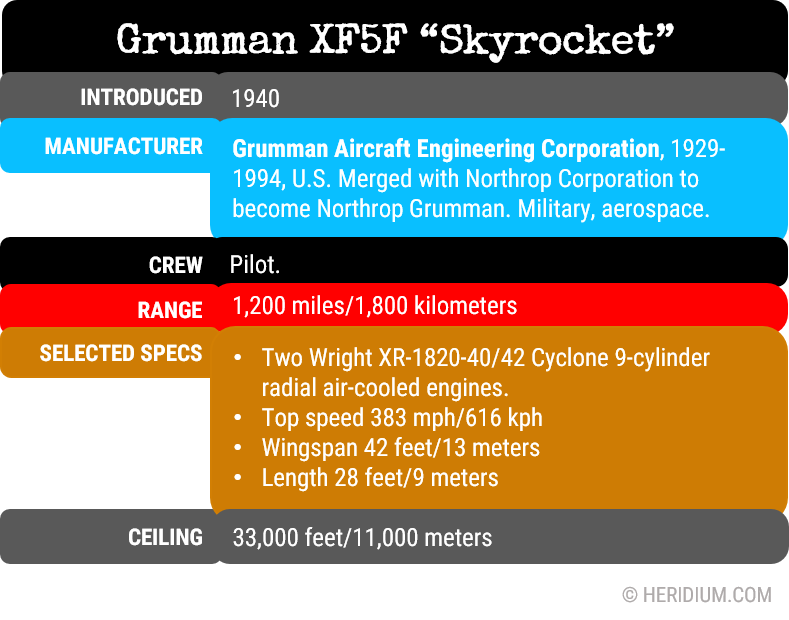Grumman XF5F Prototype Fighter
Grumman’s “Skyrocket” prototype fighter built shortly before American entered WW2.
The One and Only
With a production run of one, the prototype Grumman XF5F fighter did not affect the U.S. Navy for which it was designed during WW2 very much. However, it is a futuristic aircraft design that captured the imagination of the public and later model enthusiasts for years to come. The “Skyrocket” was also modified to create the XP-50, a land-based spin off that lost out in competition to the more traditional, but very sleek Lockheed XP-49.
Although not the first twin-engine Navy design - the Douglass XT2D-1 torpedo-bomber took that honor - trials were never carried out in 1927 on the Douglass plane. Over a decade later, the Navy still wanted two-engine planes to exceed the speed of workhorses like the Grumman XF4F-2 Wildcat and its single 1,000 hp/745 kW power plant.
On its maiden flight, the Skyrocket prototype maxed out at 383 mph/616 kph. It had good flight characteristics. However, problems developed almost immediately when the engine oil cooling system proved inadequate. There was excessive drag and the landing gear doors did not close correctly. By the time the corrections were made in the Skyrocket, the competitive plane designs, including the Vought XF4U-1, were already flying over 400 mph/644 kph.
Grumman’s land-based model, the XP-50, in hopes of saving the design from obscurity. However, it also was not selected by the military.
“The ‘Skyrocket’ was also modified to create the XP-50, a land-based spin off that lost out in competition to the more traditional, but very sleek Lockheed XP-49.”
The Skyrocket did have a feature the other planes could not match - an incredible 4,000 fpm/20.32 mps rate of climb. The Vought entry had a climb rate of just 2,660 fpm/13.51 mps comparatively and another entry, the Bell XFL-1 only 2,630 fpm/13.36 mps.
RC Model XF5F Flight at Bomber Field, Monaville, TX
2016 “Bomber Field Big Bird Fly-In” Event.
CLICK TO ENLARGE IMAGES










